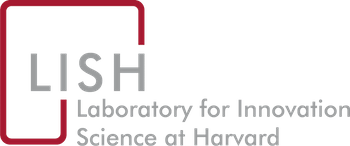Karim R. Lakhani, Andrew Hill, Po-Ru Loh, Ragu B. Bharadwaj, Pascal Pons, Jingbo Shang, Eva C. Guinan, Iain Kilty, and Scott Jelinsky. 2017. “
Stepwise Distributed Open Innovation Contests for Software Development: Acceleration of Genome-Wide Association Analysis.” GigaScience, 6, 5, Pp. 1-10.
Publisher's VersionAbstractBACKGROUND: The association of differing genotypes with disease-related phenotypic traits offers great potential to both help identify new therapeutic targets and support stratification of patients who would gain the greatest benefit from specific drug classes. Development of low-cost genotyping and sequencing has made collecting large-scale genotyping data routine in population and therapeutic intervention studies. In addition, a range of new technologies is being used to capture numerous new and complex phenotypic descriptors. As a result, genotype and phenotype datasets have grown exponentially. Genome-wide association studies associate genotypes and phenotypes using methods such as logistic regression. As existing tools for association analysis limit the efficiency by which value can be extracted from increasing volumes of data, there is a pressing need for new software tools that can accelerate association analyses on large genotype-phenotype datasets.
RESULTS: Using open innovation (OI) and contest-based crowdsourcing, the logistic regression analysis in a leading, community-standard genetics software package (PLINK 1.07) was substantially accelerated. OI allowed us to do this in <6 months by providing rapid access to highly skilled programmers with specialized, difficult-to-find skill sets. Through a crowd-based contest a combination of computational, numeric, and algorithmic approaches was identified that accelerated the logistic regression in PLINK 1.07 by 18- to 45-fold. Combining contest-derived logistic regression code with coarse-grained parallelization, multithreading, and associated changes to data initialization code further developed through distributed innovation, we achieved an end-to-end speedup of 591-fold for a data set size of 6678 subjects by 645 863 variants, compared to PLINK 1.07's logistic regression. This represents a reduction in run time from 4.8 hours to 29 seconds. Accelerated logistic regression code developed in this project has been incorporated into the PLINK2 project.
CONCLUSIONS: Using iterative competition-based OI, we have developed a new, faster implementation of logistic regression for genome-wide association studies analysis. We present lessons learned and recommendations on running a successful OI process for bioinformatics.
 Stepwise_Distributed_Open_Innovation_Contests.pdf
Stepwise_Distributed_Open_Innovation_Contests.pdf Karim R. Lakhani and Akiko Kanno. 2017.
Weathernews. Harvard Business School Case. Harvard Business School.
Publisher's VersionAbstractTomohiro Ishibashi (Bashi), chief executive officer for B to S, and Julia Foote LeStage, chief innovation officer of Weathernews Inc., were addressing a panel at the HBS Digital Summit on creative uses of big data. They told the summit attendees about how the Sakura (cherry blossoms) Project, where the company asked users in Japan to report about how cherry blossoms were blooming near them day by day, had opened up opportunities for the company's consumer business in Japan. The project ultimately garnered positive publicity and became a foothold to building the company's crowdsourcing weather-forecasting service in Japan. It changed the face of weather forecasting in Japan. Bashi and LeStage wondered whether the experience could be applied to the U.S. market.
